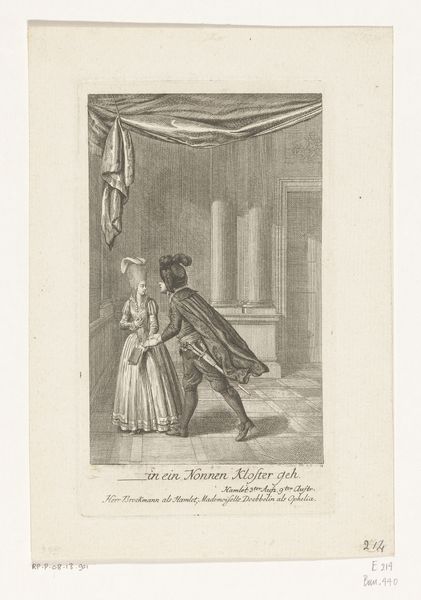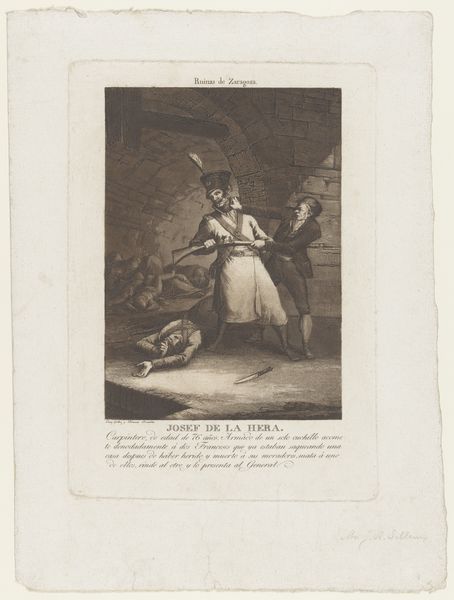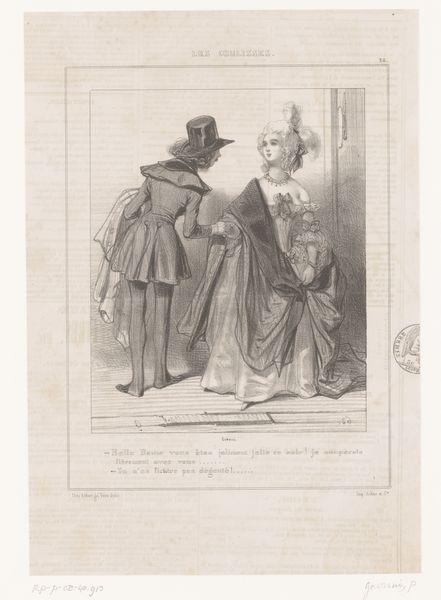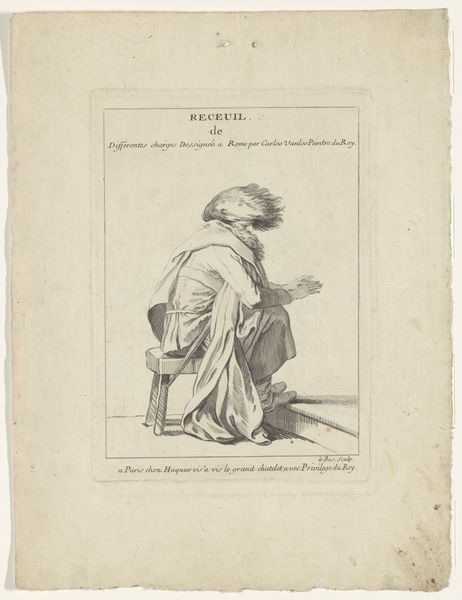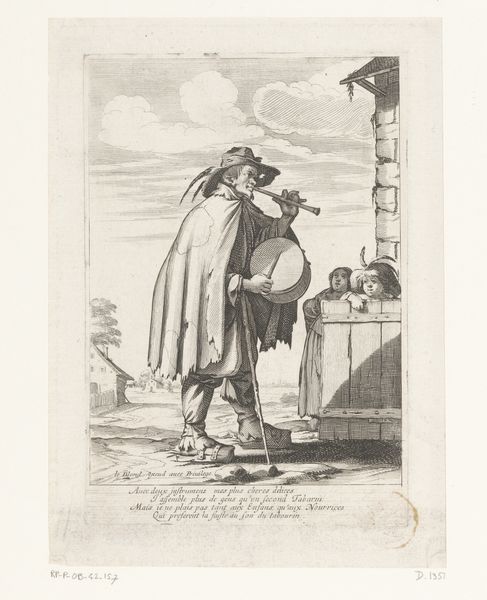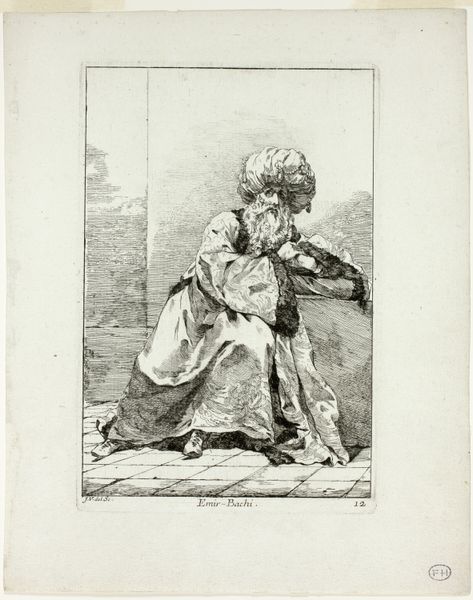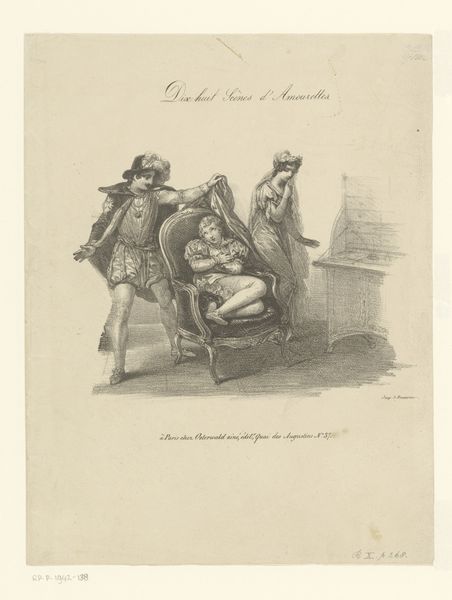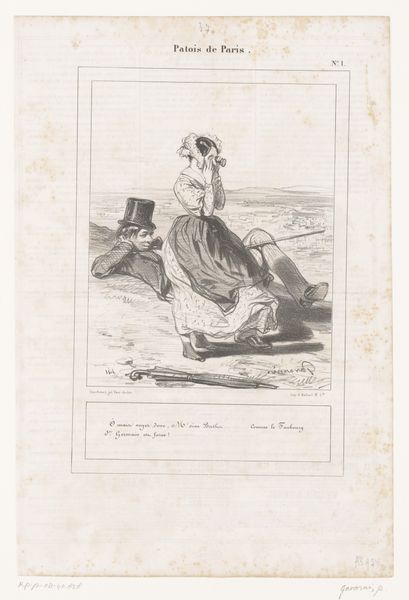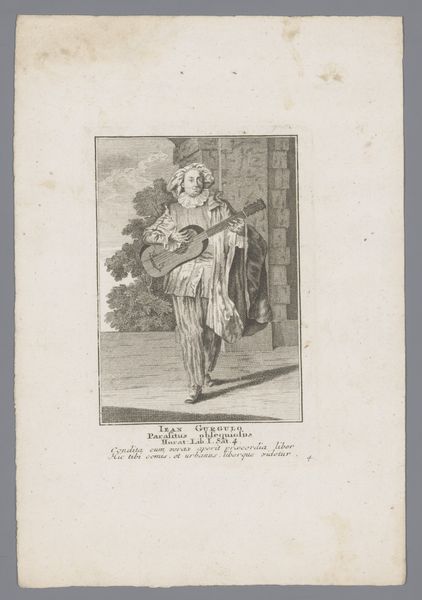
#
comic strip sketch
#
light pencil work
#
pencil sketch
#
old engraving style
#
traditional media
#
personal sketchbook
#
old-timey
#
sketchbook drawing
#
pencil work
#
storyboard and sketchbook work
Dimensions: height 116 mm, width 71 mm
Copyright: Rijks Museum: Open Domain
Curator: Bernard Picart created this piece, "Hollandse boerin met haar kleine kind op schoot," around 1703. It's currently held at the Rijksmuseum. What are your initial thoughts? Editor: It evokes a sense of quiet tenderness, doesn't it? The figures are compactly arranged, creating an intimate feeling. It’s fascinating how much emotion is conveyed with such simple lines. Curator: It's really interesting to look at this through the lens of printmaking production in the 18th century. Picart was quite prolific. Prints like these made images and information widely accessible to the middle classes. It represents a kind of visual commodity, wouldn't you agree? Editor: Absolutely. This work offers a potent symbol of motherhood— the protective embrace, the downwards gaze…these resonate even now. Notice how the child almost seems to mirror the mother’s posture; it’s a compelling image of dependence and nurture. Curator: What I find really striking is the level of craft here. Consider the different values he gets with simple lines, and the various laborers needed to generate print and get these circulating throughout Europe. Also, I'm interested in the consumption of imagery among burgeoning middle class markets at this time and the rise of domestic themes in art. Editor: Indeed, we can decode elements of Dutch values and ideas through the artwork: piety, domesticity and even hidden cultural concepts that aren't immediately obvious. The kerchief, the clothes… these all communicate specific status and roles in 18th century Holland. The simple composition emphasizes essential relationships. Curator: Right, the attire and overall presentation aren't merely aesthetic; they speak volumes about the sitters’ social class and, more broadly, about labor divisions and consumer culture of that time. Editor: Examining art through a material and process perspective adds complexity and gives a critical entry to decoding symbolism, connecting the viewer with cultural memory in tangible ways. Curator: Absolutely, the study of materials brings a richness that illuminates how cultural values are embodied in everyday objects and informs our interpretations of symbolic gestures, enriching the artistic discourse. Editor: That’s why bridging iconography and the story of materials in an artwork are important, resulting in an interwoven understanding of this delicate portrayal.
Comments
No comments
Be the first to comment and join the conversation on the ultimate creative platform.

